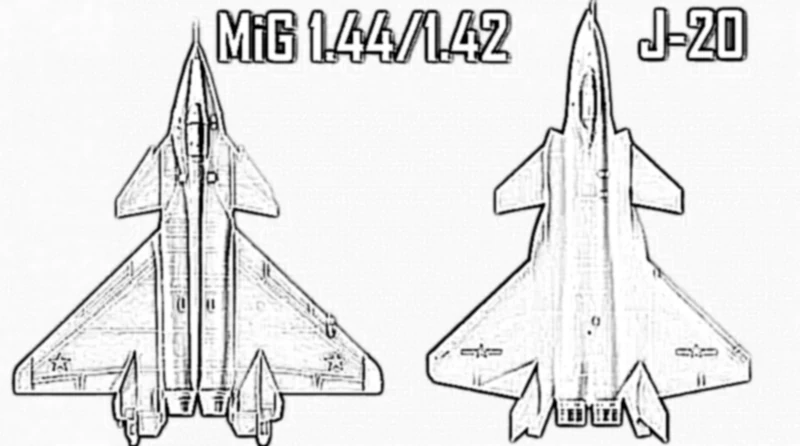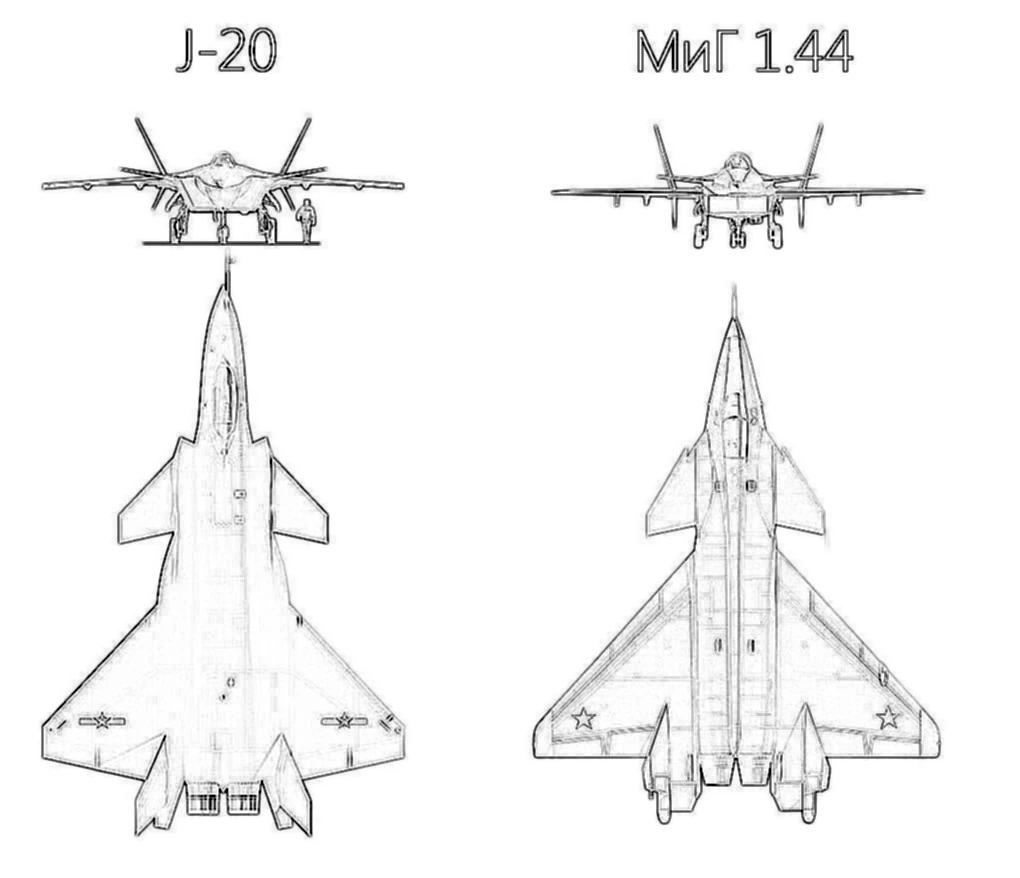On the eve of the 74th anniversary of the establishment of the People’s Liberation Army Air Force (PLAAF), a video was published on November 10, showcasing the capabilities of the J-20. These capabilities included escort missions, high-speed manoeuvres, aerial refuelling, and an air-to-air missile launch, which was captured on camera for the very first time.
Observers of open-source intelligence believe the footage captured the discharge of either the PL-10 (“Thunderbolt-10”), an infrared-homing air-to-air missile with a limited range, or the PL-15 (“Thunderbolt-15”), an anti-aircraft missile with standoff capabilities that operates beyond visual range.
The J-20
The J-20, which was manufactured by Chengdu Aerospace Corporation during the 2010s as part of the J-XX programme and entered service in 2017, signified China’s participation in the fifth-generation stealth fighter jet competition as the Asian superpower escalated its military capacities in opposition to the containment strategy implemented by the United States in Asia “Pivot to Asia.”
The airframe of the J-20 is unlike anything currently being manufactured by other global aerospace behemoths. It is distinguished from Lockheed Martin’s F-22 Raptor and F-35 Lightning II, Russia’s Sukhoi Su-57, and potential fifth-generation aircraft such as the Shenyang FC-31 Gyrfalcon, India’s HAL Advanced Medium Combat Aircraft, Turkey’s prospective TAI KAAN fighter, and Sweden’s Flygsy by its notably long frame, large frontal winglets (canards), and wings pushed towards the rear of the aircraft.
However, the J-20 resembles the Mikoyan MiG 1.44, a fifth-generation fighter that the USSR conceptualised. Both aircraft have an underbelly weaponry compartment, forward winglets, and wings-toward-the-rear configuration. The prospective aircraft, which was conceived in the 1980s to be deployed by the Soviet Air Force in the 1990s, remained unfinished due to the dissolution of the USSR in 1991.

MiG 1.44
Only some individuals are familiar with the MiG 1.44, a fighter with a troubled past that only flew twice.
The Soviet Air Force’s complete rearmament with fourth-generation aircraft was still a long way away, and in the 1990s, designers were tasked with considering aviation. The “I-90” fifth-generation Soviet fighter project commenced in 1979, four years before the Advanced Tactical Fighter platform’s development, ultimately giving rise to the F-22 Raptor. As of 1983, the aircraft’s configuration and necessary equipment had been ascertained, along with the formulation of the tactical-technical mission.
The primary criteria of fifth-generation aircraft were superior manoeuvrability, Supersonic cruising speed and stealth.

The glider’s development and testing were carried out in absolute secrecy. The aerodynamic properties of the Carnard configuration were evaluated by dropping models from a helicopter over the Kazakh steppe. Throughout these experiments, they ensured the absence of American satellites over the region, and the models were promptly retrieved.
Instead of stabilisers, the front horizontal empennage (FHE) configuration offered lift and manoeuvrability benefits at the expense of static stability. Providing the onboard computer with the requisite instructions for administering the complex system necessitated comprehensive knowledge of all attributes at various angles of attack and velocities. As a result, eight years were required to develop the prototype.
Simultaneously, new armaments, avionics, and an engine were developed. Featuring a passive antenna array, the MiG 1.44’s radar was engineered to identify an object with a 1 square metre cross-section at a distance of 250 kilometres. The fighter of the 1990s, denoted by the project designation “I-90,” was capable of 40 simultaneous engagements with 20 targets. Further radar coverage was established to encompass the rear hemisphere, and the capability existed to propel missiles toward the tail.
The Americans already possessed a prototype at that juncture. Furthermore, the configuration was not thoroughly investigated, and an extraordinary $66.7 billion was allocated towards the program—funds that the defunct USSR could not have afforded. As a result of the Soviet Union’s dissolution, the fate of the futuristic aircraft was sealed.
Due to insufficient financing (the F-22 had already entered service by the time), the MiG 1.44 took its first flight on February 29, 2000. The Sukhoi fifth generation project, the S-37, flew in 1997, while the MiG 1.44 flew again but stayed parked in the open for a long time before being transferred to the hangar.
Perhaps the cost was a consideration. The MiG 1.44 was predicted to cost $70 million, just $1 million less than the F-22. The efforts of Soviet and Russian engineers, however, were not in vain. Their innovations were used in the development of the Su-57 and other aircraft. The MiG 1.44 engine has been under development since 1982. The AL-41F engine proved powerful (18,000 kgf) but was too powerful for the Su-57; thus, a low-powered variant, the AL-41F1, with a thrust of 15,000 kgf, is now in use.
J-20 vs Mig 1.44 Design
The Chinese J-20 was designed and manufactured in an unprecedented amount of time. Beginning in the early twenty-first century, China overtook Russia in the number of fifth-generation heavy fighters, catching up with the US. From certain angles, the Chinese aircraft resembled the now-retired MiG 1.44.
From the top, the tail section has the same design, the wing profile is comparable, and the FHE is roughly the same. The only distinction is the tilted trailing edge. Many believe the Chinese copied elements from a Soviet prototype for their super-fighter.
The difference can be understood by looking at the creation of Chinese aircraft designers from a frontal view. They are similar, but in the MiG 1.44, the FHE is positioned above the wing’s plane, while in the J-20, it is level with the wing.

The Chinese plane’s bottom keel is inclined, whereas the Russian plane’s is straight. The J-20’s air intakes are positioned on the sides of the fuselage rather than the bottom. These distinctions are sufficient to show that it is a distinct aircraft rather than a clone. From the front, the J-20 is even more similar to the F-35.
The work of Soviet designers, who spent years testing models in wind tunnels and dumping them from helicopters, is likely to have been valuable to their Eastern counterparts. These initiatives undoubtedly provided the Chinese with technical solutions and production complexities.
The mystery of how sensitive information wound up in China will likely linger for a long time. They likely obtained it through various tactics, including clandestine methods or purchasing it from individuals with such access. In the 1990s and 2000s, the famed design bureau was embroiled in financial scandals. Russian professionals from the MiG bureau may have participated in creating the J-17 and possibly contributed to developing the J-20.
It is not impossible that a large percentage of the technology was gained lawfully, albeit not entirely ethically. Eastern countries have purchased batches of aeroplanes or engines to establish manufacturing in China. Contracts may be cancelled for various reasons, leaving them with a production line, product samples, and acquired technologies. This enables them to build their own aircraft by integrating ready-made solutions worldwide.
